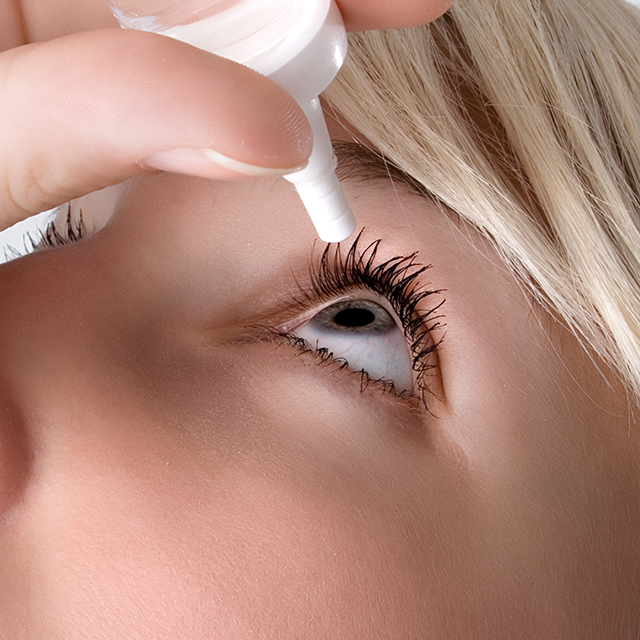Patient Education
Dry Eye Syndrome

Dry Eye Syndrome
Dry eye symptoms can be due to a variety of different causes. Some dry eye symptoms are related to an imbalance between tear production and/or tear volume drainage.
Your tears consist of 3 layers, the innermost mucous layer, the middle aqueous layer, and the outermost lipid layer. The proper balance of all three layers is critical to a normal tear film. If any of the three layers of the tear film are deficient, dry eye symptoms may occur.
Certain medications can compromise these tear film layers, such as antihistamines or birth-control medications to name a few. Various ocular and medical conditions can also compromise your tear film, such as rheumatoid arthritis, Sjogren's syndrome, blepharitis, and more. Pre- and post-operative dry eyes is also very common.
For an easy line of defense against dry eye symptoms, visit your eye care professional to choose the right product for your specific situation and individual needs.
- Mucin Layer
- Aqueous Layer
- Lipid Layer
The innermost layer directly on the eye surface. It keeps the cornea smooth and ensures that the corneal and conjunctival epithelia, which are in fact hydrophobic, become hydrophilic and allow the aqueous layer to adhere to the cornea and conjunctiva.
Makes up the greatest portion of the precorneal tear film. Consists of 99% water and contains proteins, enzymes, and antibodies. The main functions of the aqueous layer are to ensure oxygen supply to the cornea, to lubricate the ocular surface, provide antibacterial function, and the removal of foreign bodies.
Stabilizes the tear film and prevents aqueous tear evaporation. It is also a barrier against microbial contamination and mechanical irritation. The lipid layer consists of a number of different fatty components.